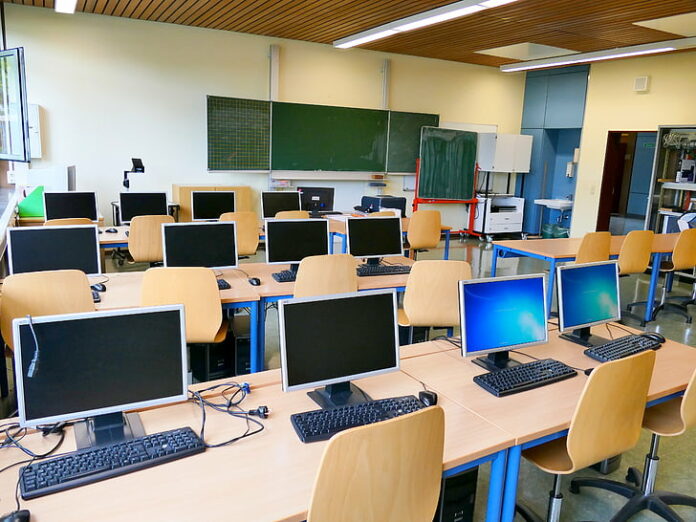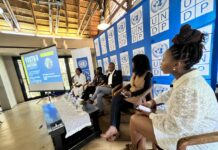The Fourth Industrial Revolution has connected the world, yet we are even more disconnected from each other. We live in a reality where the rich get richer, and the poor get poorer – not just financially, but academically. Our children are being robbed of opportunities because of a broken system. How can we advocate for “equality” when the very methods that we use to educate our learners are unequal? We may live in a rainbow nation, but our access to technological resources range on a much wider spectrum. This is a serious challenge for school leadership, writes SARAH HASSAIN.
As devastating as it was, the Covid-19 pandemic clearly signified the financial and technological disparities that exist between the public and private educational sectors in Southern Africa. As it is, there has been a longstanding gap between these sectors that has not been bridged. The pandemic led many schools to resort to virtual education. Even though this was done with pure intentions, it unfortunately amplified this gap.
READ MORE BY AUTHOR:
Educating with a greater purpose — Paving the way for a revolutionary education
As a teacher who feels deeply perturbed by this issue, I posted a question on my Instagram story, asking people in my network for their thoughts on the digital divide in South African schools. I received multiple responses with different viewpoints.
A colleague working at a private school said, “We already started using Teams a year before that, so all the kids already knew how to use the platform to work online… It was truly an easy process teaching online to be honest.” By contrast, a colleague working at a public school in the south of Johannesburg said, “Unfortunately only a handful, a ratio of 5 out of 40, received the work”. These statements highlight the fact that even though teachers in both schools attempted to provide an education to their learners, only one side truly reaped the benefits.
This is only one example.
Teachers and learners who are part of the private educational sector generally have many technological resources at their disposal. With co-curricular resources such as coding and robotics, and access to smartboards, iPads and laptops, these learners are able to continuously develop their information and communication technology (ICT) skills. In my opinion, this not only broadens the learners’ cultural and social capital, but it allows them to keep up with the rapidly changing world, and the demands of the Fourth Industrial Revolution. These learners will leave school feeling confident and knowledgeable, and will be highly innovative. They will find ease in pursuing career paths that require these skills.
What does this mean for the rest of our learners who do not have this opportunity?
The sad reality for many South Africans is that many schools, especially in under-resourced communities, do not even have essential infrastructure, nor adequate sanitation, let alone access to technological resources. These learners do not have the opportunities to develop their technological skills, nor get a basic education. Many learners were unable to access curriculum content from their teachers during the pandemic. This meant they were left with large learning gaps.
This led to a ripple effect whereby many of these learners were unable to cope with the educational demands that were placed on them once they had returned to the classroom. Unfortunately, many learners have progressed to the next grade without having mastered, or even understood, the content that was taught in the previous grade.
These challenges place tremendous pressure on educational leaders who are expected to account for learners who are not meeting the minimum requirements to pass a grade, and for the high dropout rates in schools. Consequently, this creates extra pressure for teachers who are expected to remediate these learning gaps.
Pragmatic solutions are needed to these problems.
During his 2019 State Of the Nation Address, President Cyril Ramaphosa stated that the government would provide every child in South Africa with digital workbooks and textbooks on a tablet device. Facilitated by the basic education minister Angie Motshekga, the rollout plan for digital learning and teaching support materials was said to commence in the year 2020.
However, well-intentioned these ideas are, there are few steps that need to be taken before the rollout can be effective.
First, there needs to be an overall recognition and acceptance that change needs to occur. There needs to be a common understanding that we are living in a new era, and that outdated methods of teaching and learning are not sustainable. School leaders need to take it upon themselves to be proactive about this idea, and should assist their staff with becoming comfortable with change – despite any fear that they may have.
RELATED:
Looking at South Africa’s digital divide for #WTISD
Second, more teachers in public schools should be motivated by educational leaders to attend the ICT courses that are provided by the department of education in order to up-skill themselves.
Third, laptops should be provided to teachers in different schools, so that they can develop the skills that they have gained from these courses, and through collaboration with each other. With that being said, school leaders should create opportunities within their organisations to push teachers out of their comfort zones to ensure that they make use of these skills. This can be done through implementing different programmes and procedures for administration and communication within the school.
Fourth, once the teachers are comfortable with this growth journey and have developed the necessary skills to move forward, the government can provide computers to different schools. Instead of providing a tablet to each child, perhaps the building of smaller computer rooms might be an effective way to introduce technology as a learning tool, to the schools where these resources are required. These computer rooms should be built in a manner that is safe and controlled. In addition, school leaders can host fundraisers where the money that is raised will be used for the maintenance and safeguarding of these computer rooms.
Finally, new subjects should be added to the school curriculum. These subjects should lead to the development of learners’ soft and technical skills, in order to help bridge the gap between the private and public educational sector, and to prepare learners in public schools to assimilate with the rapidly changing world. In the meantime, individual school leaders should ensure that their respective schools implement co-curricular activities which will achieve this goal.
In closing, it is important to understand that this is not a quick-fix solution, and it will not eradicate our problems entirely. However, I truly believe that it is a steppingstone in the right direction. This is a call to all educational leaders and teachers. Let us work together to rectify the imbalances of the past, so that we can pave the way for a better future of education in South Africa.
In the words of author Tshilidzi Marwala, “For us to succeed as a nation in the 4IR, we must be able to provide our people with education in its total.”
Featured image via Creative Commons
Sarah Hassain is an educator who is passionate about holistic youth development. She is currently completing a master’s Degree in educational leadership and management with a focus on policy development.









